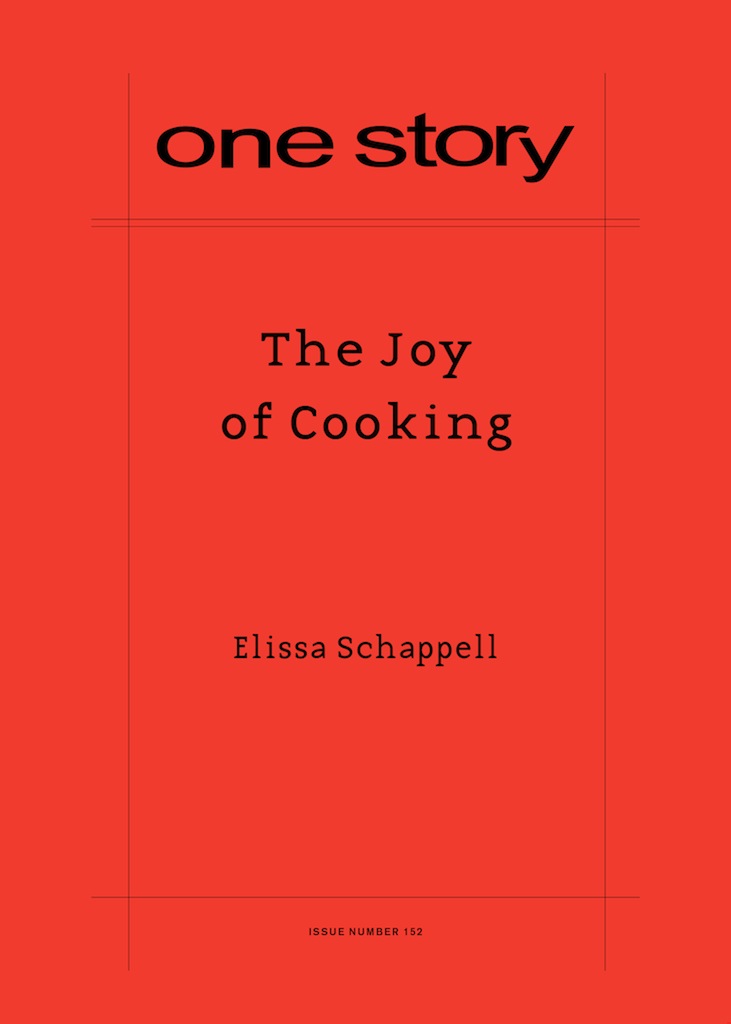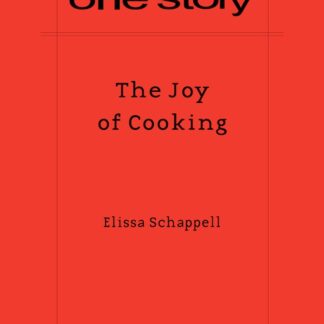
Joy of Cooking
$2.50
36 in stock
Excerpt
I was halfway out the door when the phone rang. Another person would have let the machine pick up, but you know how it is when you’re a mother.
“Thank God you’re there,” my daughter Emily said, sounding out of breath.
“I am, but sweetie,” I said. “I’m in a bit of a rush…”
“No, no, wait! Don’t go,” she cried. “Please, Mommy? I’m begging you. I just need one thing, I promise.”
I looked at the clock: 4:00. Yoga started at 4:30. After yoga, provided I wasn’t bleeding or paralyzed, I was planning to pop into the drug store and buy new lipstick. Something youthful but sophisticated, with shimmer. My mother always said that a woman should have a signature lipstick the way a man had a signature cocktail. I’d married and divorced Emily’s father, Terry, in Cherries in the Snow. After the new lipstick, I was going to treat myself to an overdue haircut. Something new, possibly even a little racy. I’d been toying with the idea of bangs. Then, at 6:30, I was meeting Hugo, the new man shelving the philosophy section at the bookstore where for the last fifteen years I’d been working as a cashier and bookkeeper. I had shaved my legs. It was just coffee, but let’s just say it had been a long time between cups of coffee. 1,825 days to be exact. Five years. Not that I was counting.
Elissa Schappell
Elissa Schappell is the author of two books of fiction, Use Me and Blueprints for Building Better Girls, which includes “The Joy of Cooking” and will be published by Simon & Schuster in September 2011. She is also co-editor with Jenny Offill of the anthologies The Friend Who Got Away and Money Changes Everything. She’s a former Senior Editor at The Paris Review and Founding Editor, now Editor-at-Large of Tin House, and a Contributing Editor at Vanity Fair. Her work has appeared in The Paris Review, Bomb, Vogue, SPIN, The KGB Bar Reader, The Mrs. Dalloway Reader, Cooking and Stealing, and other magazines and anthologies. She lives in Brooklyn.
Q&A by Hannah Tinti
- HT: Why did you choose to write about anorexia, and more important, why write about it from a mother’s perspective?
- ES: Because I had to. You can’t write a book that deals intimately and truthfully with the experiences that shape American women’s lives without writing about our tortured relationship to food. It brings up issues of female empowerment and anger—two things that interest me greatly; two things that make a lot of people uncomfortable. I had to write it from the mother’s perspective because my sickness is needing to tell the truth, to say the thing you shouldn’t say. Take the experience we are familiar with—in this case the relationship between a young woman with an eating disorder and her mother—and show you a very different reality. Just as truthful. I wanted to know, What’s the mother’s side of the story? In the typical narrative, the daughter is a victim, her mother a controlling monster. The thing you don’t know, can’t say, is sometimes it’s the daughter who is the monster.
- HT: One of the most interesting things about this story is that it takes place over the course of one phone conversation—with the characters in two separate places. Why did you choose this scenario, and did you ever feel tempted to put them in the same room together?
- ES: No. I knew that they had to be physically separate, yet ear-to-ear, in each other’s heads—disembodied voices, connected by an invisible cord. If they were physically in the same room the daughter would have too much space to be theatrical, slam doors, lock herself in the bathroom. Also I wanted there to be that disconnect and space to suggest distance, which will get bigger as Emily moves further and further away.
- HT: “Joy of Cooking” is part of a series of linked stories in your new book, Blueprints for Building Better Girls. How does it fit into the overall collection, and are Emily and her mother featured in any other stories?
- ES: All the characters in these stories, in some way or another, appear in other places in the book, either directly or indirectly. In the case of Emily, she physically appears in another character’s story—briefly befriending this woman in a time of need. She also lives in the imagination of other characters, some she doesn’t know—she’s the crazy anorexic girl—and she doesn’t even know it. The impact of the relationship between Emily and the mother is in evidence in the story told from the point of view of the younger sister, who has become a mother. The different ways these women see and judge each other—how they jibe or are in opposition to what we know about them—was compelling to me.
- HT: Ultimately “Joy of Cooking” seems to be about letting go—not just a mother letting go of a daughter, but also letting go of the guilt and jealousy and anger she’s been carrying. Do you think Emily’s mother will ever be able to find some kind of peace?
- ES: It’s incredibly hard to let go—of a child, and those emotions. The mother has enabled her daughter, sacrificed her chances to form intimate relationships with men, not only to her own detriment, but at the expense of a younger daughter, who she loves, but is oblivious to her needs, to the fact she’s acting out sexually. I do think she’ll find some peace, now that Emily is separating from her. Sometimes the relationship between parent and child transcends what we might think of as the typical bond. It’s more like a love story. The great love of your life might not be the person you fall in love with, marry, and perhaps grow old with. That person could be a parent.
- HT: How long did it take you to complete this story?
- ES: The first draft took very little time. I knew the characters, felt compelled to write the story, it felt subversive, this coupled with fear—you know, you’re not supposed to blame the victim—always lights a fire under me. Once I hit that state of flow, I have a sick ability—for better or worse, usually worse—to sit for five, six hours without getting up, and write. For the first draft I also had a clear structure, using the actual recipe to break the sections down, which helped me enormously in the early drafts. Ultimately, I abandoned it because it felt artificial. That and I wanted the reader not to focus on the how the chicken was being made, but on what a profound experience it was for this mother to teach her daughter this, and what a huge step forward it was for this daughter—not only is she making food, she’s making it for a man, she’s never had this sort of relationship. So, it’s really a happy story.
- HT: What are you working on now?
- ES: I’m finishing a collection of essays. I haven’t been able to write as much non-fiction as I’d like because I’ve been so focused on this book, and I’ve missed it. It’s lovely to be writing essays again. One of them is about my quest to become a killing machine. Very liberating.
- HT: What is the best bit of advice about writing you have ever received?
- ES: When there is no wind, row. No tears in the writer, no tears in the reader. Oh, and take breaks to stretch your arms and hands. It’s hard as sin to type with a pencil.
